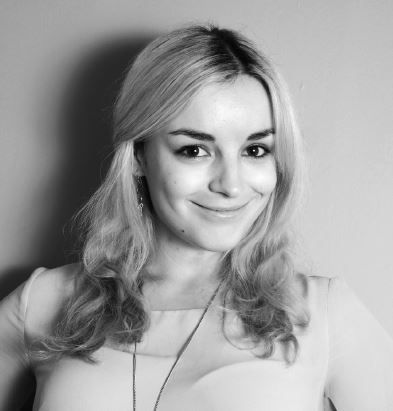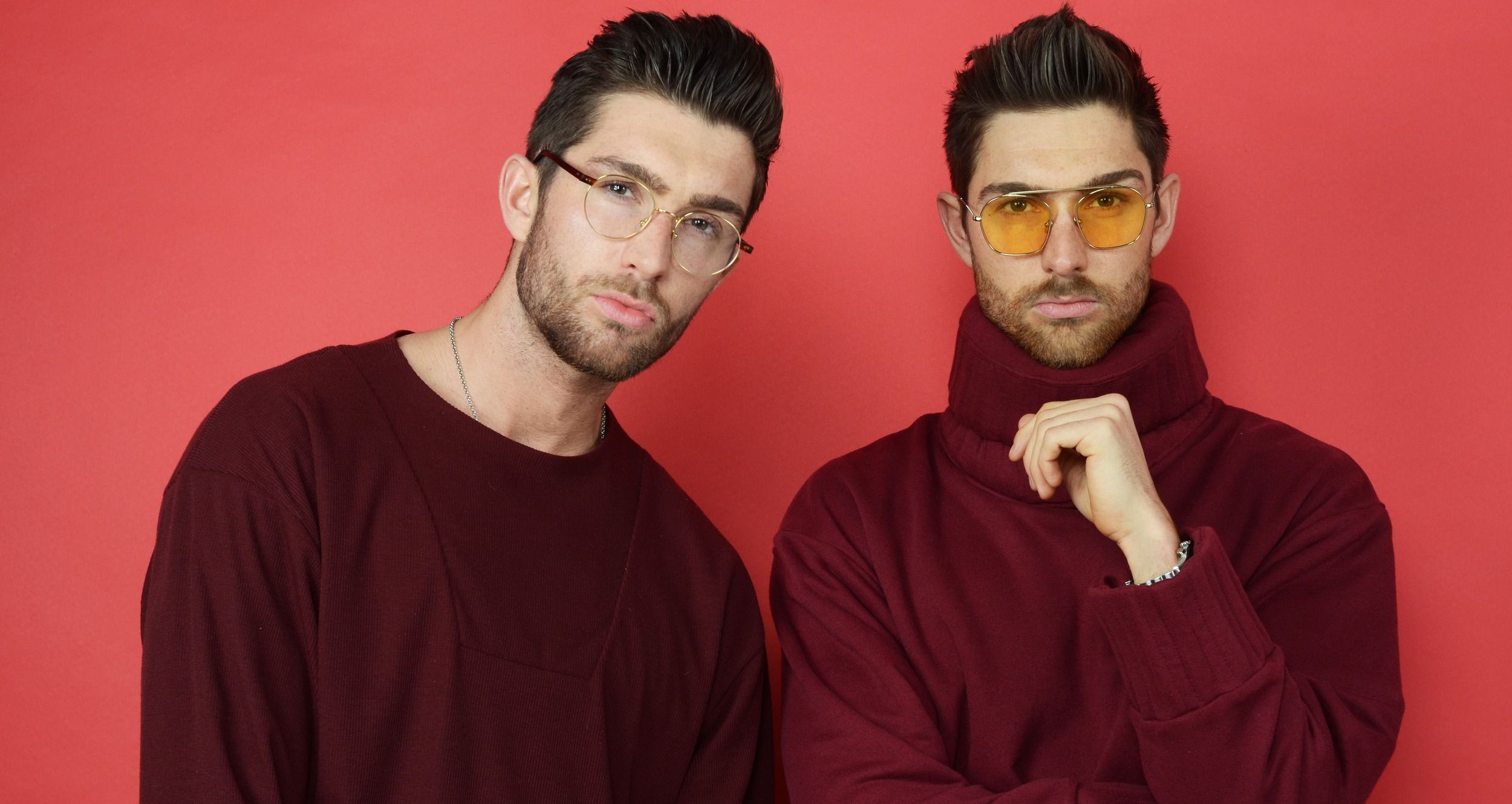Putting together your first fashion shoot can be a daunting experience. Even if you have successfully completed other kinds of photoshoots previously, or assisted an established photographer on fashion sets, being responsible for everything can be a whole different matter.
There is a lot to think about in order to ensure that the shoot goes smoothly. You need to choose all of your team members, from models to makeup artists and stylists, and decide whether you need an assistant or not. You will have to find a location and source full looks for your models to wear.
A successful fashion shoot needs a concept or story, and you also have to consider how much time you will spend during the shoot. Then you have to make sure that everyone understands your vision, and finally, you have to bring it all together on the day.
This guide will help you through setting up your first fashion shoot, step by step, so that you are equipped for success.
Here is what we will cover:
- How to plan your shoot on a mood board
- Choosing your team and location
- Sourcing garments and accessories
- Pulling it together on the day
Recommended Reading: If you’d like to learn how to create amazing portraits, grab a copy of Photzy’s premium guide: The Art of Portrait Photography.
How to Plan Your Shoot on a Mood Board
Coming up with a mood board for your fashion shoot will help you to develop your vision, will serve as a guide throughout the shoot, and will help your other team members to understand what you are aiming for.
It’s a good idea to separate your mood board into several sections. First, create a collage that captures the look or theme of your shoot, drawn from images you find online. You shouldn’t share these images commercially or with anyone outside of the shoot team, as you do not own the copyright, but it’s fine to use them as inspiration.
Coming up with a mood board for your fashion shoot will help you to develop your vision...
Another section should look at the hair and makeup you want to use, and another at the location. It’s best to start with inspiration here, but later replace it with actual images of the location you will use, if you are not shooting in a plain white studio. You can also include inspiration for and then real images of the models and wardrobe you would like to use.
Your mood board can and should be shared with the whole team, so that everyone is on the same page.
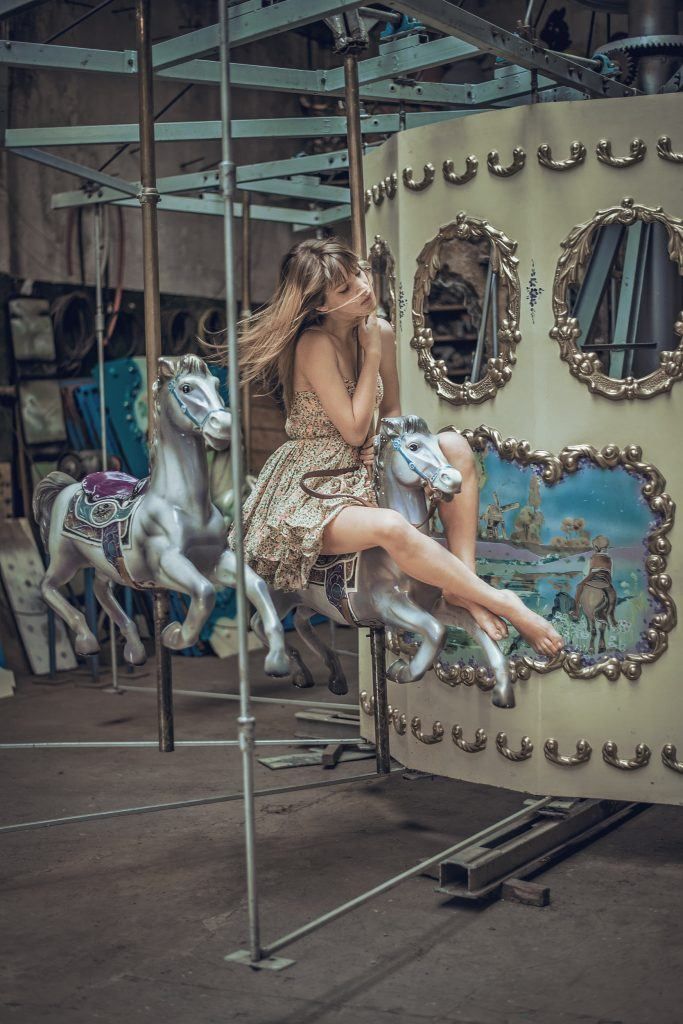
Note the dark mood, gilded and playful setting, and female model.
How do you actually create a mood board? Start with the image editing software of your choice – Photoshop, perhaps, or an online service like Canva. Now browse your favorite source of inspiration. Pinterest is a great place to look, as is Google Images, Tumblr, or your favorite fashion magazine’s website.
Search for images that capture your vision and put them together as a collage. You may find that your ideas evolve and adapt as you come across new images. When you have filled the space and you are satisfied that the mood board represents what you want to achieve, save it as a .jpg or .png and share it with your team.
Keep it downloaded to your phone so that you can check back throughout the shoot.
Key Lesson: A mood board is essential for both developing and conveying your vision. Collect your inspiration into a collage and then share it with your team to get everyone on the same page.
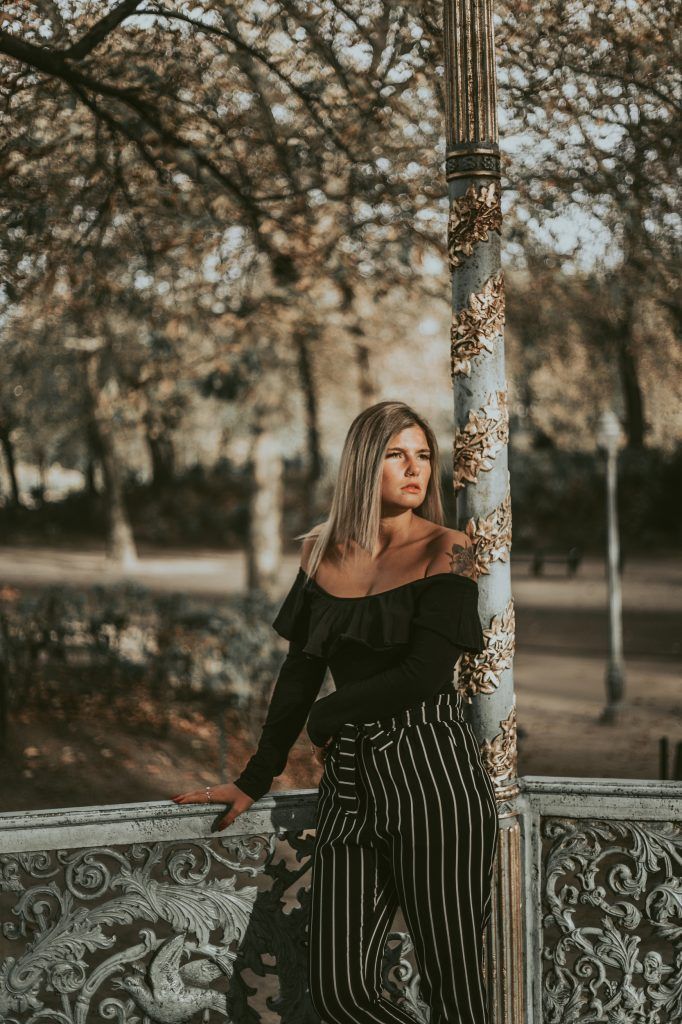
Note both the similarities and differences to the previous image. These two could easily be found on the same mood board.
Choosing Your Team and Location
The right location and team can make or break an image. Whether you use just a simple studio setup or go out into a different kind of location, the choice is very important.
The best place to start is your mood board. What kind of setting do you see repeated over and over? If your inspiration is pulled largely from images of the beach, it wouldn’t make sense to try and shoot the same feeling in an abandoned factory. Unless you feel confident in being able to say something with the juxtaposition of style, stick with what fits.
The same can be said of your choice of models. You should look for someone who fits the style you see repeated in your mood board. If all your inspiration shots are of blonde women, you shouldn’t go for a dark-haired man!
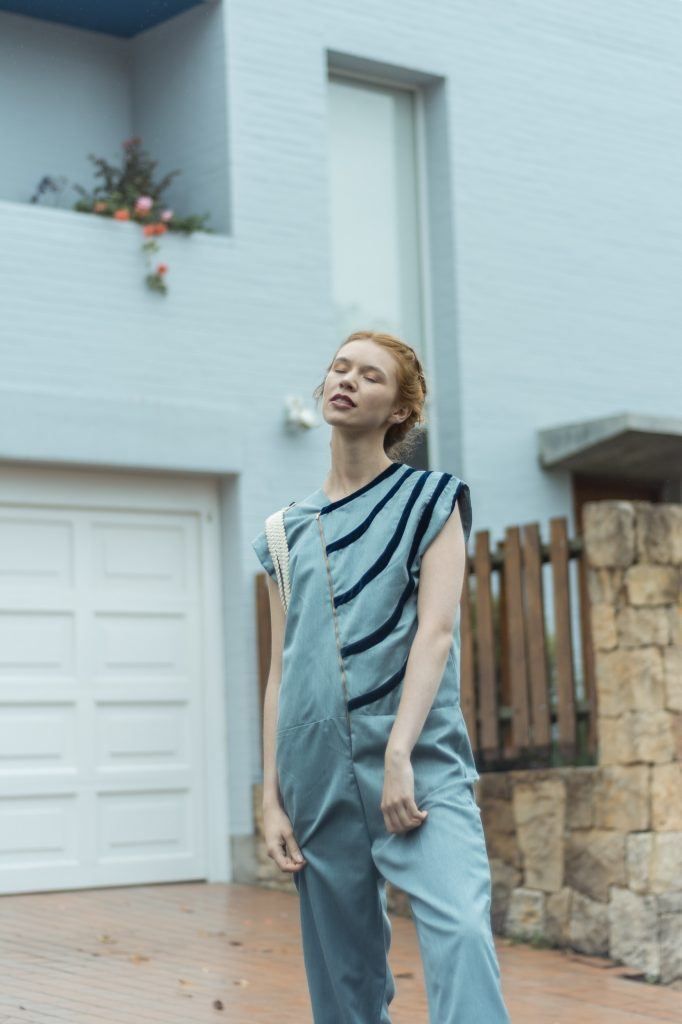
This image would not be as successful if the color of the house and garment weren’t matched.
When it comes to finding your team, you have two options. The first is to pay professionals. You can source models through an agency and discover hair and makeup artists (HMUA/MUA) and wardrobe stylists online or through modelling sites like ModelMayhem or StarNow.
The second option is to go the route of shooting TFP (time for print) if you don’t have a budget. It’s tricky to get the same level of talent when you are shooting for the first time with no cash on offer, but you will find people who are also trying to start their fashion careers who might be willing.
A good start is to put up a casting on a modeling site or a Facebook group. Choose your team carefully by looking at their portfolios. Have they done anything like this before? How did the shots come out? If you don’t like their previous work, you are not likely to enjoy working with them on set.
Offer to submit your shots for publication to a fashion magazine as an extra incentive.
Key Lesson: Choosing your team and location is tantamount to your shoot’s success. Study your mood board closely and find the people and places that would best fit your needs.
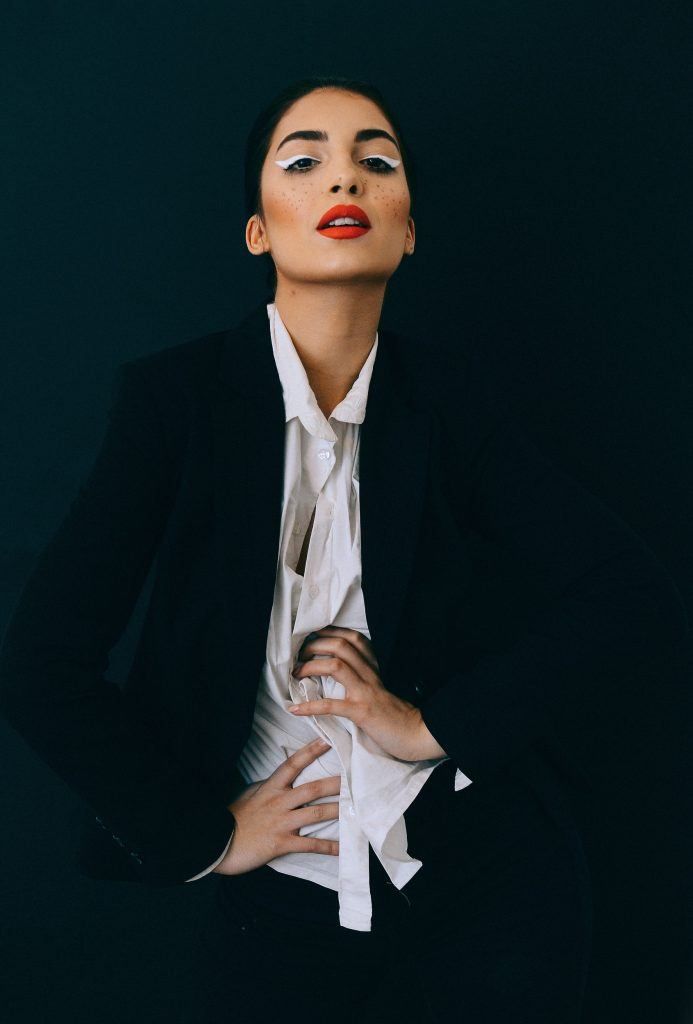
The studio setting here allows for great control over lighting and contrast.
Sourcing Garments and Accessories
Finding garments that will work for your shoot is crucial. After all, this is a fashion photoshoot we’re talking about here!
Getting a stylist onboard may help, as they can source garments for you. If you are on a budget and need to do it yourself, try these options:
- Contact designers directly by sending them an email with your mood board and concept, full details of the shoot including theme, and mentioning other brands you are asking to supply items. Give them enough lead time to get garments out to you via mail or courier! Targeting small, indie designers will be best until you are more established yourself.
- Visit small brands in-store to discuss your shoot with the designer or store owner. They may allow you to sign out certain items on loan.
- You can even purchase items to use for the shoot. Take good care of them and you can return them to the store afterwards to get your money back. It’s not strictly something that is allowed, but careful photographers can pull it off!
Remember to always cross-reference your mood board to be sure that the garments will fit the overall mood. You are responsible for looking after the clothes on set, so be aware that any damage or even cleaning may come out of your pocket.
Key Lesson: Clothes are integral to your shoot, and you need multiple looks, so source them directly from designers or buy them yourself.
Recommended Reading: If you’d like to learn how to create amazing portraits, grab a copy of Photzy’s premium guide: The Art of Portrait Photography.
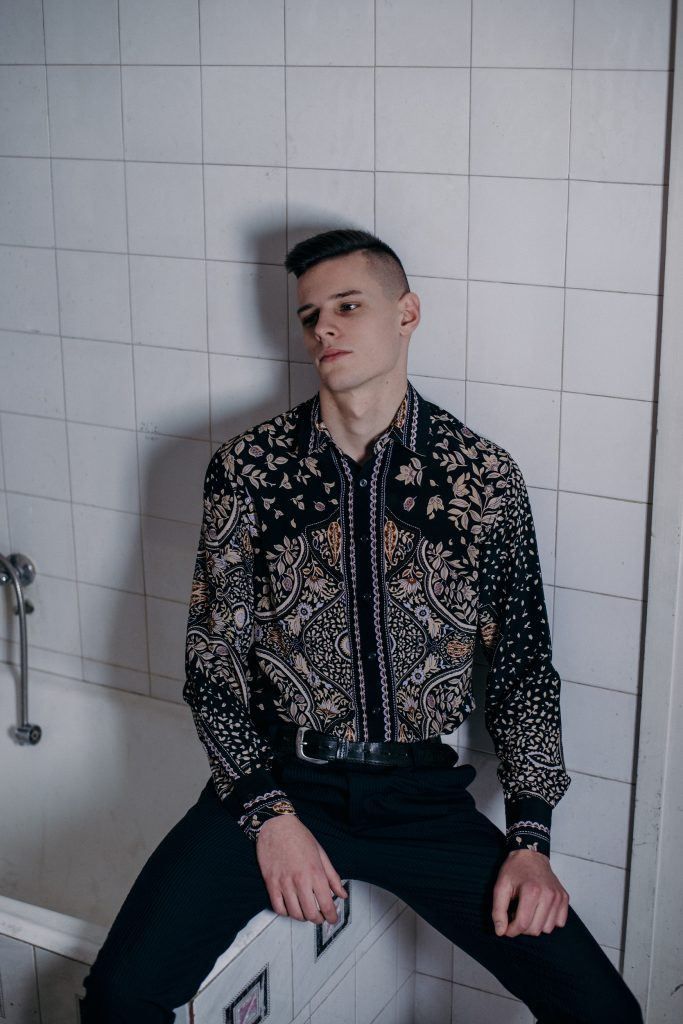
The sharp black garments and the busy pattern are perfectly matched with the stark, geometric background.
Pulling It Together on the Day
Keeping it together on the day may require flexibility and adaptability, especially if you are working in a location which is open to the public. You may have to change your plans due to weather, or due to time restrictions. Have a backup plan in case you you can’t use your intended location, and know where makeup and wardrobe will be done.
A call sheet is a good way to keep everyone organized from the beginning. Your call sheet lists the team members and when they should arrive, as well as the address of your shoot. You should also include timings for the day, such as when the makeup artist should start and finish their tasks and how long you will spend working on each look.
Key Lesson: Preparation is everything, but you should stay flexible and adapt to circumstances which may arise.
A call sheet is a good way to keep everyone organized from the beginning.
Keep an eye on your watch as you work, and make sure you have spare batteries, memory cards, and weather protection just in case. Don’t forget to schedule breaks, and allow your team to eat and drink if the shoot will last more than a few hours.
If you refer back to your mood board often, then you should be able to pull it together on the day.
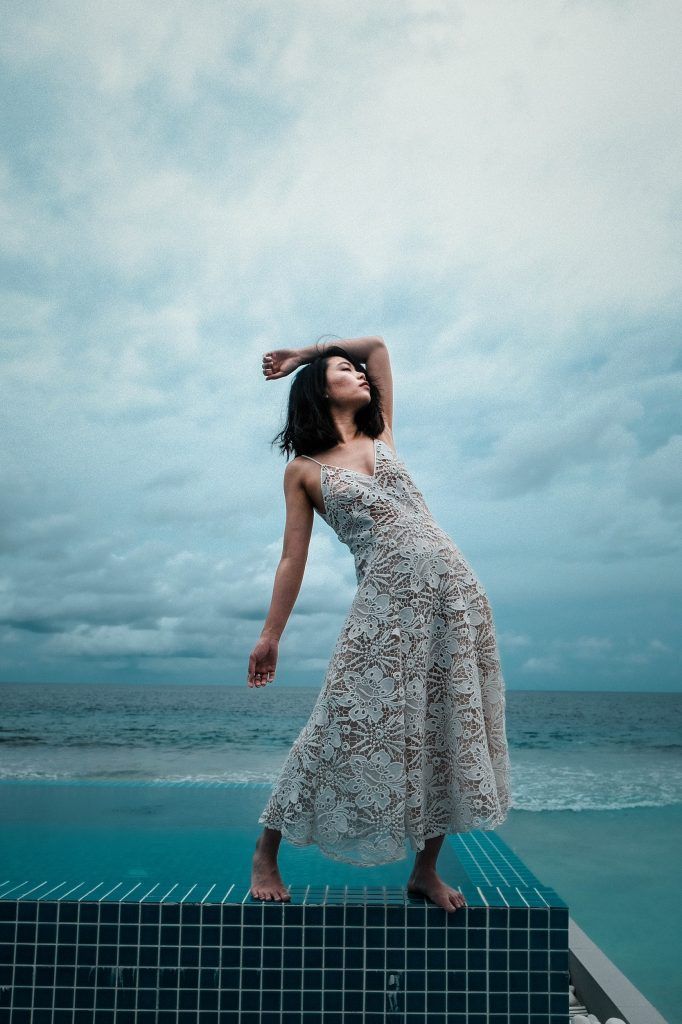
Everything comes together here to make this a professional fashion shot.
Conclusion
A successful shoot requires:
- A clear mood board for your vision
- A call sheet with a carefully selected team and location
- Adaptability and flexibility
- The ability to stick to your inspiration and keep it in mind before, during, and after the shoot
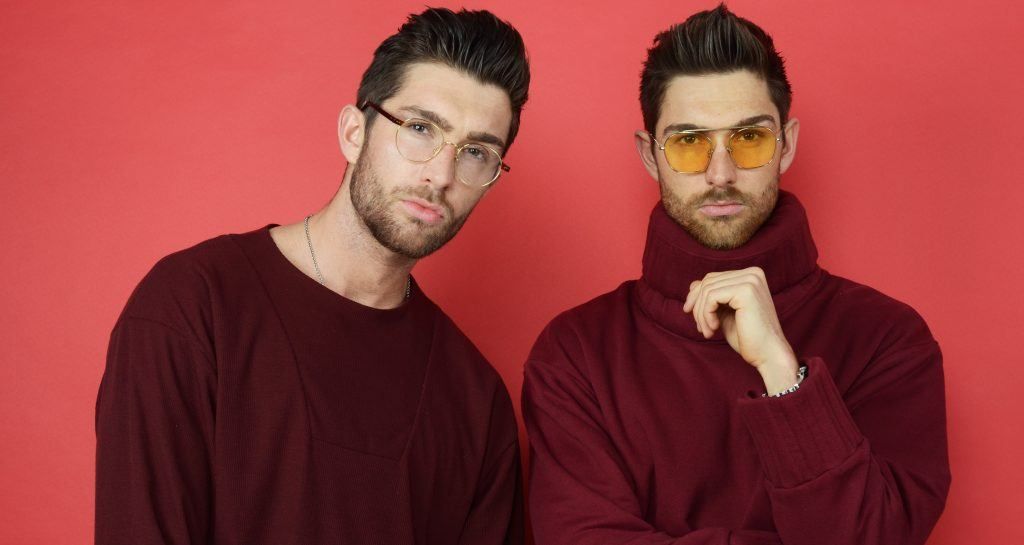
Photograph by Rhiannon D’Averc
Self-Check Quiz:
- Which software is useful for creating mood boards?
- Where can you find inspiration?
- Which sites accept casting calls?
- What should you take into consideration when choosing your team?
- What requirements should your location fulfill?
- How can you find garments?
- What is a call sheet for?
- What information does a call sheet contain?
Learning Assignment:
Put together a call sheet and mood board for a photoshoot. If you are not ready to dive in yet, work on a fictional idea and see what you can come up with. Find real models and designers who you would like to work with and create documents that you would be happy to share. If it comes out well, you might even dare to use it for a real shoot!

